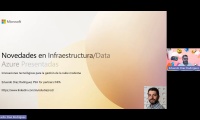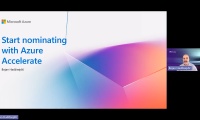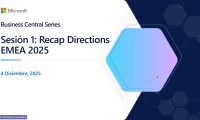What is this module about?
Este vídeo está disponible únicamente para usuarios de Cloud Champion. Por favor, inicia sesión o regístrate para continuar.
This module will help you to define your own business model for your Business Intelligence offer. It will also allow you to simulate your own profitability.
It proposes multiple pricing model options. Ultimately, you are defining your own pricing model and level as you want without any constraint neither from Microsoft nor Lemon Operations.
The module contains one video to watch + one Excel file to capture and simulate your own model. It will also It will also require some time to define the capture various parameters to define your own model.
In addition to this video, you will find a demo of the Business Model simulator that should allow you to use it without specific assistance. Should you require some, Lemon Operations may offer you a paid service. Contact: info@lemon-operations.com
This module is probably the most difficult one of the whole curriculum. It requires full attention and certainly multiple iterations before getting into the final picture.
Content of the video:
- Definition of the Business Intelligence offer we are proposing you to build
- Financial fundamentals based on international accounting rules
- How to define the value for your customers
- Business model options (cost plus, utility model, flat rate)
- Pricing and profit simulator demo
Goal of this video:
At the end of the video, you should:
- List the customer value of your offer (direct, indirect, operational, emotional)
- Quantify the direct and indirect value (proxy) for the customer (per user or per account, one off or recurring)
- Enter this data in the Customer Value tab in the excel tool
- Define your own pricing model in the Pricing Tab
- Define the return on value for the customer (cost for which value)
- Define your own cost of goods sold in the Cost of goods sold tab
- Check the margin consequence of the pricing/cost decisions you have made earlier in the Gross Margin tab. Play with the cursor to simulate multiple usage units assumptions
- Define the number of variable usage unit for a small account, medium account and large account profile in the Gross Margintab
- Enter a high-level number for the SG&A expenses in the SG&Atab
- Enter new customers, churn and customer expansion assumptions inthe Business Assumptions tab
- Check the outcome of your work in the P&L tab and review any number from the previous tab to tune the outcome. (To ease the process, it may be relevant to have the P&L tab in a separated tab on one display (display 1) and all the other tabs on another one (display 2). Hence, you will be able to monitor any change on display 2 on the P&L on display 1. A very efficient way to immediately apprehend the consequences of your decisions!
- Once you are done, we recommend you to get to the "Go-to-Market" module
Etiquetas
Confirmar Compañia
Datos de la compañía proporcionados por Clearbit (www.clearbit.com)
¿Tienes problemas? Contáctanos.




